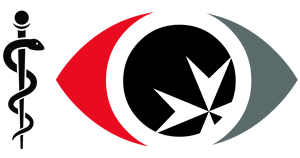Retinopathy of prematurity (ROP) affects 50% of infants born prematurely before 31 weeks of gestation. A full-term pregnancy has a gestation of 38–42 weeks.
Both eyes are usually affected, and about 8% of at-risk infants need treatment to prevent sight loss or even blindness. These infants require regular and frequent retinal screening to determine appropriate management, with sight-saving measures including ocular laser and, in more severe cases, surgery.
This schematic diagram shows the growth of abnormal vessels in the retina as a result of high circulating oxygen concentrations in the neonate.

![]()
Historically, screening has been performed by ophthalmic experts, but increasingly state-of-the-art digital imaging is employed to detect retinal disease. The digital images can be read remotely and used to advise on treatment.
Despite being standard equipment in most hospitals, until now no such facility existed in Palestinian neonatal units despite the dire clinical need.

There are 38 neonatal units in the Palestinian Territories: 27 in the West Bank, 3 in East Jerusalem, and 8 in the Gaza Strip.* SJEHG conducts ‘manual’ screening programs across 6 separate units in the West Bank alone.
The number of at-risk neonates at a given point of time across this population remains uncertain, although an epidemiological study published in 2019 suggests that a third of such neonates in Gaza, and 17% in the West Bank, develop ROP, yet sadly a significant number of at-risk children are not systematically screened for want of resources.
Estimates from Gaza alone (personal communications with ophthalmologists in Gaza City) suggest that several hundred children may suffer untreated ROP annually, and therefore reduced vision.
* Massad S, Tucktuck M, Dar Khawaja R, et al. Improving newborn health in countries exposed to political violence: An assessment of the availability, accessibility, and distribution of neonatal health services at Palestinian hospitals. J Multidiscip Healthc. 2020;13:1551-1562. doi:10.2147/JMDH.S270484

In 2022, thanks to the vision, commitment, and generosity of the RTW Charitable Foundation in New York, we acquired two state-of-the-art Phoenix ‘ICON’ retinal imaging cameras.
For the first item in this population, we now have the capability to screen premature infants in neonatal ITUs in the West Bank and Gaza, where current screening is, sadly, imperfect, with many children developing irreversible retinal complications each year.
Our clinical teams are organising the networks needed in key ITUs to put this valuable new resource to work where the burden of ROP is greatest.
Future Plans – Establishing a ROP screening and treatment service across the Palestinian territories
The ROP Working Group* is focussed on three key areas to develop this service.
Firstly, we are running pilot clinical trials in our Hebron Clinic to familiarise our staff with the use of the equipment. This is progressing well with one of our lead nurses already able to employ the camera.
Secondly, we are obtaining better data to define the scale of clinical need. This entails a survey of all neonatal ITUs, the number of at-risk infants, and current screening arrangements (plan here).
Thirdly, we are investigating the optimum IT platform to allow images to be reviewed and graded remotely, both by our own staff, and by clinical staff across the SOA.
Once we have a reliable reporting system in place, with staff familiar with the use of the equipment, we shall then broaden the service beyond Hebron to other parts of the West Bank, and to Gaza.
- * ROP Working Group
Medical and surgical retina experts:
Iyad Habil (MD), Waleed abu Dayeh, Yehia Al Sweiti, Ghassan Madieh, Ala Talbishi, Salam iriqat, Samiha Shwieki (Fellow), Mohammed Ma’ali, Omar Abd Aldayem
Pediatric ophthalmologists
Mohammed Daraghmeh, Radwan Al Juneidi
IT
Tareq Elian, Ahmed abu Hamdeh
Our Clinicians using the Phoenix Icon ‘GO’ retinal screening camera. February 2022.







